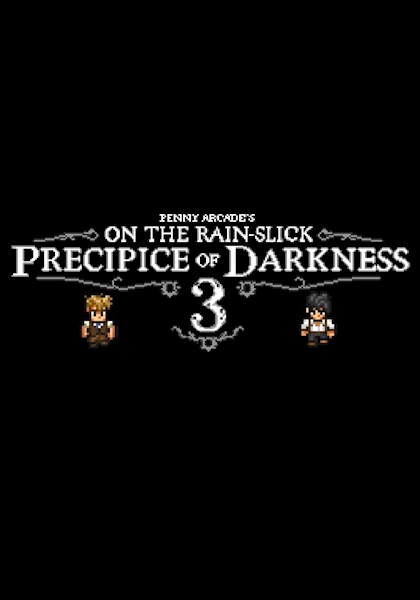Penny Arcade Adventures: Episode Three Review
-
Category: ReviewsHits: 13172

Article Index
Page 2 of 2
In fact, the class system is pretty much the heart of combat in Episode 3. Using "class pins", which level up independently of characters, it's possible to equip and unequip different sets of abilities and attributes. Every character in the party has a base class that you can't change, but the variety available allows for a lot of really interesting combat styles and synergies. Some classes take the form of healer/tank/DPS/supporter/nuker archetypes, but others, like the Tube Samurai, can change stances to offer different boosts and attacks for different situations. Due to all the possible combinations and movesets, the number of build options is impressive - there's a lot of room for creating unique strategies. For instance, one of my most effective characters was based entirely around slowly building up attack attributes through buffs, unleashing huge amounts of damage several turns in - but I could have also just as easily made him a debuffer, or a fast attacker, or a magic user. All the little differences between damage types, MP costs and so on really add up as you get deeper into the game, or ramp up the difficulty setting. One other interesting change to the JRPG template is how attacks are queued up. Each character is represented as an icon on a "track" of sorts, and depending on the Agility stat, he or she will move towards the end at different rates. Keen players will quickly learn how to time move commands to create powerful combos, and this element also opens the door to interrupting or slowing enemy attacks. It's not quite an active system, but affords a lot more flexibility than your standard back-and-forth turn-based setup once you learn how to use it to your advantage - in fact, some of the most challenging foes are all but impossible to beat without learning how to do so.
Presentation
Let's face it - most people who are interested in Penny Arcade Adventures will be interested primarily because they're fans of the webcomic. While the 3D visuals have been left behind for Episode 3, the new pixel art style is very well executed and retains all the personality of the source material, with some well-drawn character portraits and tons upon tons of references to many of the webcomic's most obscure or famous characters, like Deep Crows - and fortunately, it wisely avoids bringing back the stars of the previous two games. The game also loves to explore absurd scenarios, from a Star Trek themed space station to a certain blast from the past that fans of previous Zeboyd games will probably get a kick out of.
The other side of the Penny Arcade package is writing. While I've drifted away from following the comic in recent years, I've always appreciated Jerry Holkins' unique grasp of the English language, and the game is loaded with his signature obtuse wordplay and wit, strange affinity for hobos, mimes, etc., and vulgar humor. His style of writing actually suits the JRPG theme better than the prior games, and while not everyone will enjoy the humor on display, I don't think there was a joke that didn't hit its mark for me. Oddly, the events of the previous games' stories have been almost completely abandoned, and the player-created character seen in the first two titles is gone without a word. That's not really a complaint, but it's clear that consistent storytelling is hardly the focus here.
There's also the matter of sound effects and music. Given the retro nature of the game, the SNES-style soundtrack fits right in, with some surprisingly catchy songs that sound like they've been pulled straight out of the past. All of the little menu beeps and other sound effects are similarly appropriate, but given the style of the game, they're pretty minimalist.
Finally, it's worth mentioning that the game is only available on Steam and Xbox LIVE Arcade. The Steam version I played doesn't have any Steam achievements or other similar features, unfortunately.
Conclusion
Despite enjoying the first two Hothead-developed titles, Penny Arcade Adventures: Episode 3 is a big improvement over them, both because of much smarter mechanics and a more defined identity and genre. While it's not radically different from previous Zeboyd RPGs (it even uses the same menu style), it's a well-paced, well-designed dungeon crawl with turn-based combat that's, frankly, much better than what most games offer these days.
If there's one minor complaint to be made, it's that the focus on combat is probably going to turn some people away. Whereas the prior titles in the series had their share of exploration and adventuring, Episode 3 can largely be reduced to a series of combat encounters. And, as good as the combat is, even with the relatively short 8-hour length, it can get just a tad monotonous. If you don't enjoy turn-based JRPG-style battling, then unfortunately Episode 3 doesn't have much else to offer.
All that said, if you're in the mood for that particular brand of combat, and enjoy Penny Arcade's distinct brand of humor, then Penny Arcade Adventures: Episode 3 definitely delivers, and is well worth its asking price. Zeboyd and Penny Arcade fit each other like a glove, and I'd love to see more titles expand upon what's been laid down with this one.


